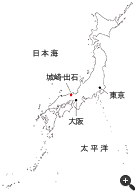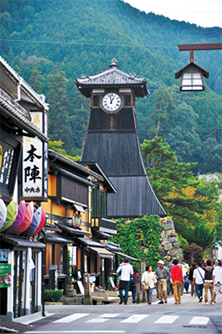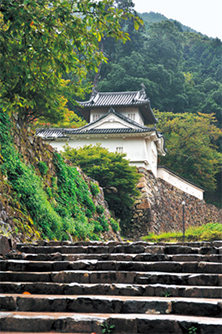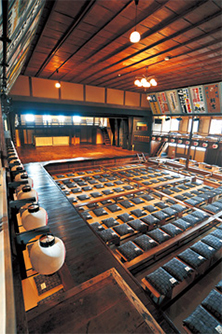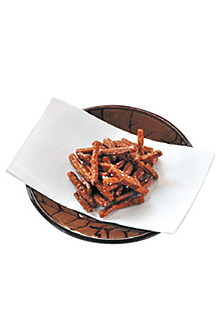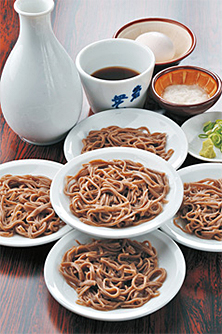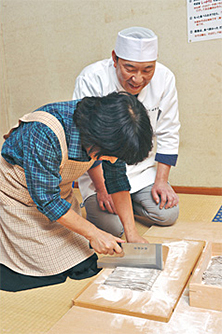niponica is a web magazine that introduces modern Japan to people all over the world.
2014 No.14

To read the e-book you need to have JavaScript enabled in your browser and a free Flash Player plug-in from Adobe Systems Inc. installed.
 Strolling Japan
Strolling Japan
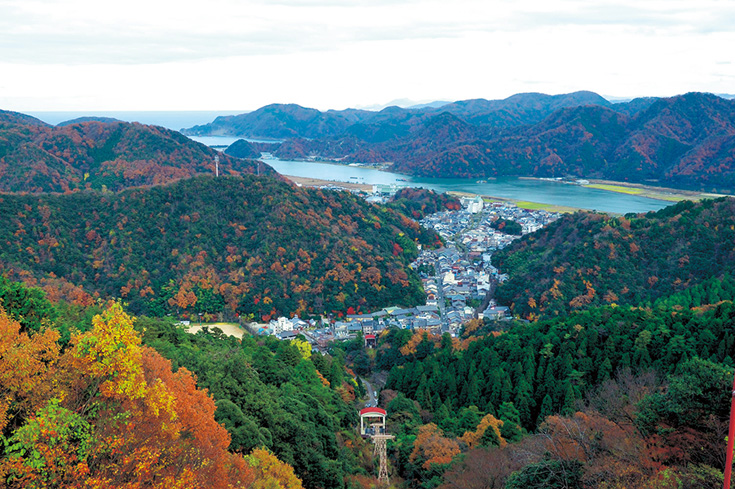
The lookout at the top of Mount Daishi offers views of Kinosaki and the Sea of Japan. Ride the ropeway to the lookout for seven minutes of excitement in the air.
While you are in Kinosaki, consider going to Izushi-cho, as well. It is about 40 minutes away by car. Like Kinosaki, the town developed against a backdrop of history and culture. You will want to see the Shinkoro clock tower (a local icon), the ruins of Izushi castle, the residence of a feudal chief retainer who served high-ranking samurai, and the remarkable red-walled saka-gura, where saké was once brewed and stored. These and other buildings, dating from the 17th to the 20th centuries, are waiting to be discovered throughout the district. One of them, the Eirakukan Playhouse, was built in 1901 and still offers charm and beauty in the form of kabuki plays, traditional kyogen comedies, rakugo comic monologues, and more. In the old days towns throughout the country had a playhouse like this one, but few remain.
Sara-soba buckwheat noodles are Izushi’s culinary claim to fame. They are served on small, locally made Izushi pottery plates, ready to be dipped in a rich and hearty broth made from bonito fish flakes and kombu seaweed. The town has more than 40 sara-soba shops. Some offer lessons in making noodles by hand, and others sell confections made from buckwheat flour. Seeing how each place is unique in its own way is another way to enjoy your Izushi adventure.
The Shinkoro clock tower is now an icon for the Izushi district. The yesteryear sound of gongs and drums announce the time three times a day.
Ruins of Izushi Castle. The stone walls have stood guard ever since the castle was built in the 17th century.
In Izushi, you may want souvenirs of the highly favored soba karinto, a deepfried confection made from kneaded buckwheat dough.

Kinosaki and Izushi Area Maps
Map A: Kinosaki Area
Seven soto-yu
1. Satono-yu Hot Spring
2. Jizo-yu Hot Spring
3. Yanagi-yu Hot Spring
4. Ichino-yu Hot Spring
5. Goshono-yu Hot Spring
6. Kono-yu Hot Spring
7. Mandara-yu Hot Spring
Map B: Izushi Area
●Getting there
By air, fly from Osaka International Airport (Itami) to Tajima Airport. From there, take a bus (approx. 40 minutes) to Kinosaki Onsen Spa. To get to Izushi from there, take a bus from JR’s Toyo'oka Station (approx. 30 minutes).
●For more info
Nishimura-ya Honkan Inn website:
http://nishimuraya.ne.jp/honkan/
Eirakukan Playhouse Japanese-language website:
http://www.izushi-tmo.com/eirakukan/
Soba Fuji Japanese-language website:
http://www.sobafuji.com/




